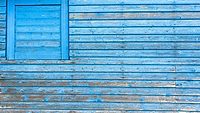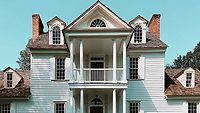5 Small Details That Greatly Improve the Presentation of Restored Buildings

Photo credit: ronstik / iStock / Getty Images Plus via Getty Images
Structural integrity and safety are the top priorities of restoration professionals. Repairing a dilapidated property’s damaged sections, bringing it up to code, regaining its functionality and building its resilience to weather are the primary points of restoring any old building.
Beautifying commercial and residential structures isn’t the be-all and end-all of property restoration, but these five minor adjustments can improve the presentation of restored buildings.
1. Inviting Color Schemes
Being in a state of disrepair can be a blessing in disguise when a property’s appearance is dated or lackluster. Changing its color is a slight change with a significant impact, presenting an opportunity to lend more interest to the property’s aesthetics.
Using a combination of three hues — a main one and two accents — is color theory 101. Anything more can be overwhelming. These color palettes are the safest bets:
- Monochromatic: It consists of a shade, a tone and a tint of a single hue. This scheme makes sense to minimize color contrast.
- Split complementary: This scheme comprises a base primary hue and two complementary colors opposite it on the color wheel. It’s perfect to lend visual complexity to exterior and interior design.
- Achromatic: A trio of neutrals make it up. A blend of white, gray and black screams cleanliness and simplicity.
- Analogous: Two complementary colors next to a base color define this scheme. It highlights harmony while keeping contrast subtle.
Be mindful of color quantity and temperature. Every color affects mood and perception based on its amount on a surface and how cool or warm it is. For example, the color black defines lines well in small quantities, but can make a space feel small when used as the predominant color.
Cool hues, like blues or greens, evoke feelings of calmness, making them a favorite main color.1 On the other hand, warmer hues, such as reds and oranges, are energetic and can pop against a backdrop of visual serenity.
2. Historically Accurate Front Door
The entry door is usually the focal point of the property exterior, despite occupying a small portion of space. It attracts the eyes, so its design can lend character to an otherwise plain-looking building or render an impressive structure seem underwhelming.
Restoring a non-historic property provides plenty of wiggle room. However, it’s a different story when a piece of real estate holds cultural significance to its locale. In this case, the door’s design must be faithful to the original details.
Consult a local historian to learn about the historic building’s vintage look to nail the colors and materials and recapture its architectural charm. The authorities may permit modernization to help iconic structures adapt to the times. Restoration regulations spell out which rules are breakable, offering guidance on which classic design elements are changeable while remaining compliant.
If permitted, consider decorating the front door with an ornamental wreath or hanging a sign with a welcome message. Adding cozy furniture, updating the doormat and installing an artistic doorknocker are also fantastic ideas to spruce up the entryway.2
3. Stylish Address Numbers
Changing the look of the address number can be refreshing. This design element can be a head-turner, pleasantly surprising those familiar with the old design.
Address numbers come in various sizes, fonts and styles. While it can be challenging to decide on the hardware’s final look, don’t overdo it to avoid coming off as tacky.
Furthermore, ponder whether to introduce decorative details — like a logo or an insignia. Consider spelling out the address name or choosing backlit options to make them visible from the street come nighttime.
4. Façade Lighting
Using more versatile illumination solutions can put the property’s frontage in a fascinating light. Artificial lighting increases buildings curb appeal when the sun goes down. It adds drama to the exterior, highlights features that should draw attention and deemphasizes unexciting areas.
For outdoor lighting, spotlights can create interesting patterns when pointed at walls upward. Step lights illuminate the pathways in style and bollard lights radiate in all directions. Floodlights brighten broad areas from above and eliminate dark corners. Garden lights can jazz up greenery, while string lights can make any ordinary space Instagrammable.
Regarding light color, yellow or amber light attracts fewer insects than blue ones, 3 lighting up the property at night without magnetizing swarms of flying insects boosts comfort and safety and benefits the environment.
5. Consistent Hardware
A restoration project is an excellent time to update the property’s metallic fixtures. Choosing a similar color and finish for all doorknobs, handles, hinges, locks, faucets, hooks and railings promote coherence. They can tie the room together and subtly underscore consistency throughout the property.
Hardware finishes can get old. Using patina-developing metals is a neat workaround to make fixtures age gracefully. Copper, bronze and brass finishes cosmetically change with time because of how they oxidize.4 Determine what a particular finish’s patina will look like to ensure it can mesh well with the rest of the space when it appears.
Put a Premium on Property Presentation
Restoration means giving a building a new lease on life. Beauty may carry less weight than structural integrity and safety in the minds of restoration professionals, small design adjustments are all it takes to make a rehabilitated building noticeably more attractive than ever.
Resources
- https://digitalcommons.unl.edu/cgi/viewcontent.cgi?article=1169&context=ncpacapstone
- https://www.qualityoverheaddoor.com/blog/how-to-decorate-your-front-door/
- https://resjournals.onlinelibrary.wiley.com/doi/full/10.1111/icad.12479
- https://chem.libretexts.org/Bookshelves/Inorganic_Chemistry/Supplemental_Modules_and_Websites_(Inorganic_Chemistry)/Descriptive_Chemistry/Elements_Organized_by_Block/3_d-Block_Elements/Group_11%3A_Transition_Metals/Chemistry_of_Copper
Looking for a reprint of this article?
From high-res PDFs to custom plaques, order your copy today!






